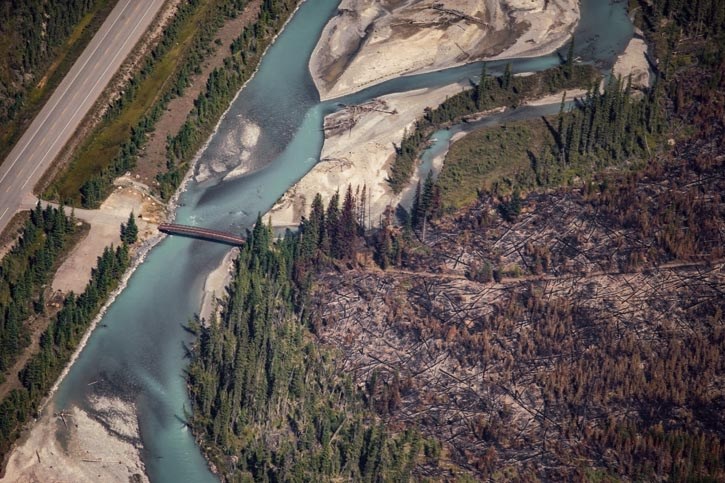Parks Canada fire fighting crews working the Verdant Creek wildfire since the middle of July can expect to continue to put out hot spots into the near future.
The fire has been burning since it was first detected on July 15 and, according to incident commander Jed Cochrane, crews will keep working key strategic containment lines in multiple locations, detecting and putting out hot spots, until snow falls.
“We are not going to put it out – Mother Nature is going to put it out when (she) snows a foot on it,” he said. “What we will do is continue to hold it strategically until the snow comes, which is all we can do.
“Fire operations are going to continue on this fire for the coming weeks – it is certainly not done ... we have our strategic control lines in place and those strategic control lines, if all goes well, will hold the fire in the spots that we want.
“In the places we don’t have strategic control lines, the fire may continue to grow. Those are places without values at risk, people or property, so we are more comfortable with not having direct containment. When we have a fire 15,500 hectares in size, it is not feasible to put the entire fire out.”
Cochrane said each morning firefighters receive GPS coordinates for hot spots in the fire’s perimeter at the control lines, and they put them out.
“It is a long, tedious, slow process that will continue for the coming weeks,” he said.
Half of the total fire area is inside Kootenay National Park and the other half inside Mount Assiniboine Provincial Park. Both agencies, along with B.C. Wildfire Service, have been working together on strategically fighting the wildfire since it was detected.
Cochrane said the fire was discovered in an unusual manner, as typically wildfires from lightning strikes are reported to the federal agency by members of the public who spot them from a roadway, or while in the backcountry.
“It was not a typical discover for us,” he said. “In this case, the fire was in Verdant Creek in East Kootenay; it is one of the most remote places in probably the Rocky Mountain national parks and it is tucked away in the backcountry.”
That first day, at 8 a.m., he said crews flew in an initial attack crew to discover the fire was 10 to 15 hectares in size. Another two choppers were sent in, and air tanker support requested from the province of B.C. The location was too steep and remote, however, for the large aircraft to take action.
“At the end of the day, despite three helicopters working it and every effort we could put towards it to stop it as fast as we could, the fire was already 100 hectares in size,” Cochrane said. “And on July 16 we had this large wind event and cold front move through.
“Those winds pushed the fire south and east, so from Verdant it spread south down into Mount Assiniboine Provincial Park and east into the Talc and Simpson areas.”
Ignition, fuel source and weather are three of the most critical factors that affect a wildfire. Cochrane said wind events, like the one on July 16, pushed the fire into new areas. A wind event on July 30 saw the fire reach the Vermilion Valley, and begin to affect Highway 93 South.
The priority for Parks on the north end of the fire was to prevent it from crossing the Continental Divide and entering Banff National Park as well as the province of Alberta.
Cochrane said crews have made “excellent progress” since the end of July in containing the fire on those lines of containment – in the Talc and Simpson drainages.
As a result, last week, closures to areas like Egypt Lake and Sunshine Village were lifted and public access restored for summer visitors.
Three other containment lines are the focus of Parks work, said Cochrane, including a focus along Highway 93 to prevent the fire from crossing it and a containment line at Miracle Creek to prevent the fire from entering the next valley over.
Finally, there is a containment line south of Kootenay Park Lodge being worked by a 20-person attack crew on loan from the Alberta Wildfire Service.
“They are making excellent process at Shanks,” Cochrane said. “We are optimistic that will prevent further northward spread of the fire into the Vermilion Valley.”
In total, 85 firefighters are working the fire and, along with five helicopters and support staff, the total crew is 125 strong.
The strategy on each containment line is to work the fire 200 feet into the “black,” Cochrane said. That includes using hoses and pumps in creeks, or bladders and helicopter support, to find the hot spots and extinguish them.
“We are feeling quite confident all those pieces are going to hold,” he said, adding the Bow Valley may also see continued smoke over the coming weeks as the weather heats up and it gets windy.




